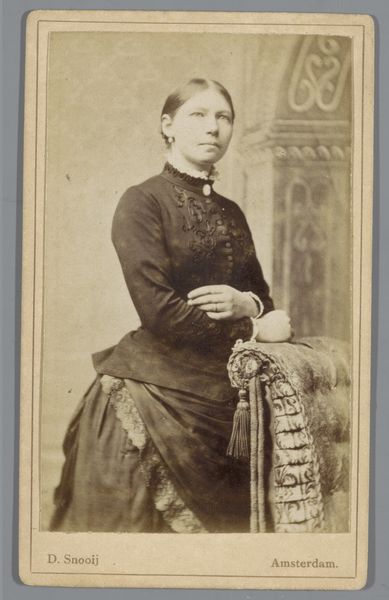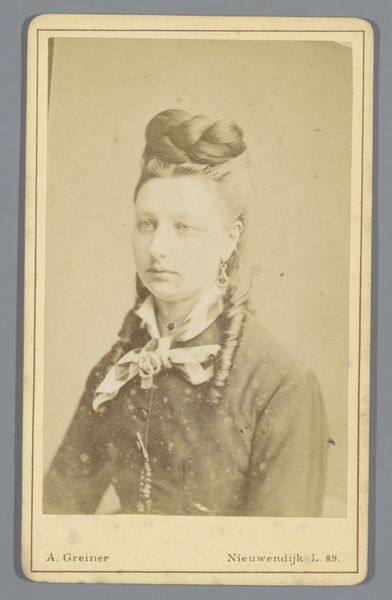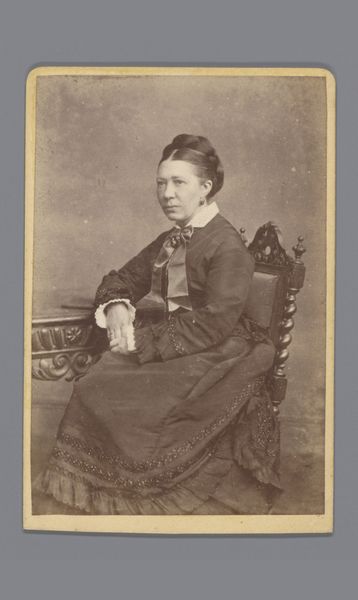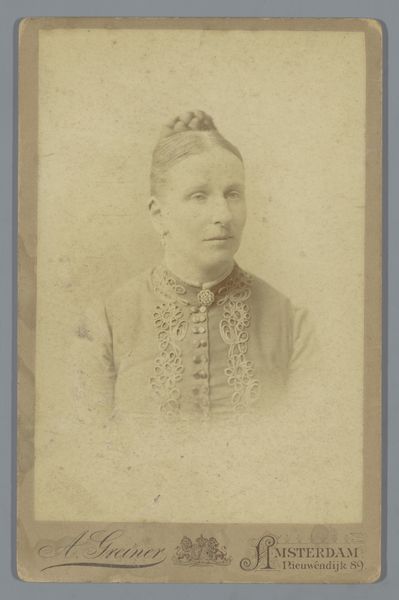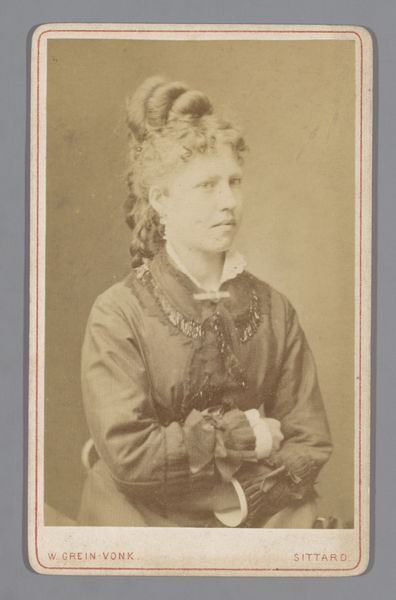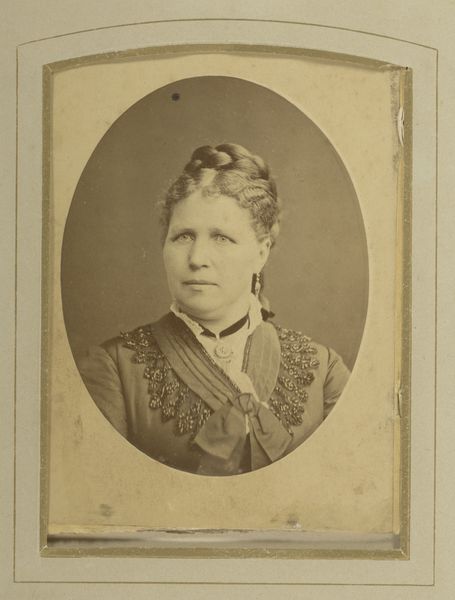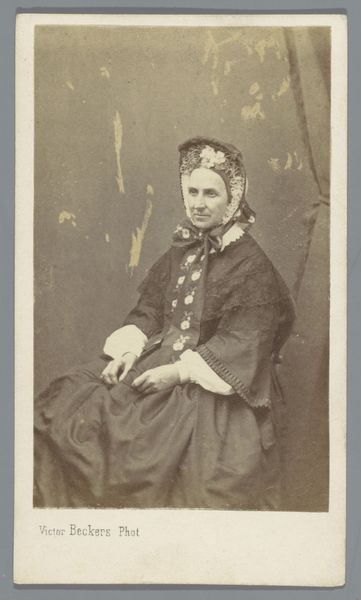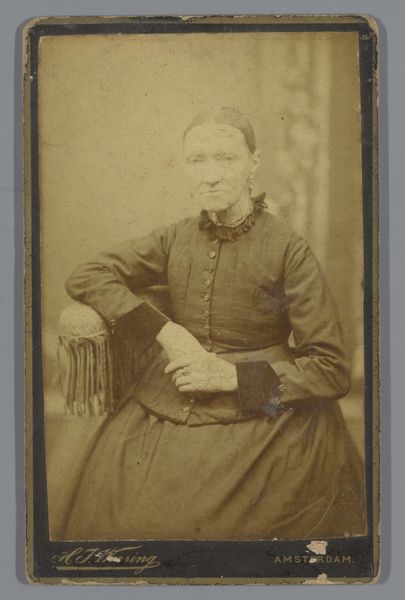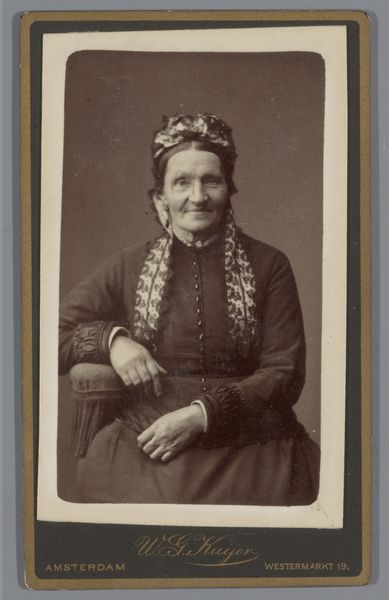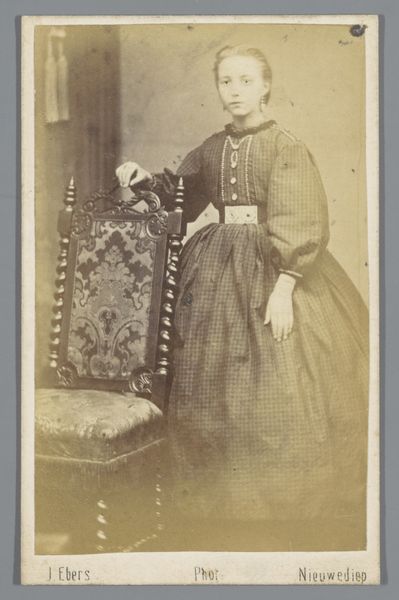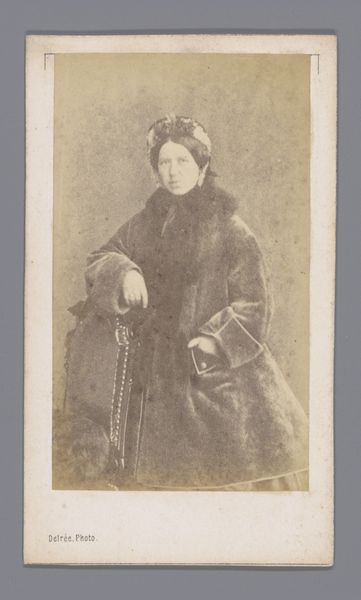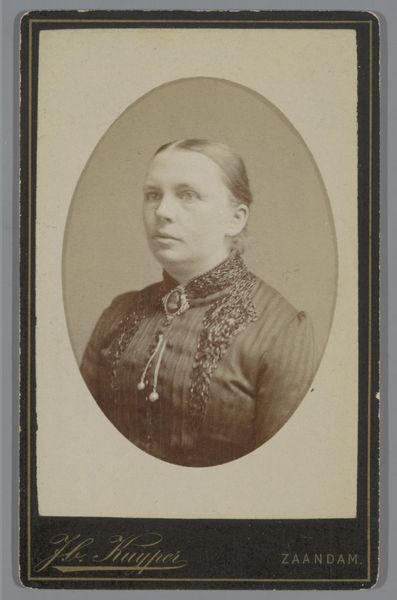
photography, gelatin-silver-print
#
portrait
#
photography
#
gelatin-silver-print
#
19th century
#
realism
Dimensions: height 105 mm, width 64 mm
Copyright: Rijks Museum: Open Domain
This portrait of an unknown woman was created by Albert Greiner, a photographer working in Amsterdam in the mid-to-late 19th century. Made with the albumen print process, it involves coating paper with egg whites and silver nitrate, creating a surface to capture a finely detailed image. Photography’s arrival coincided with an explosion of industrial production. All those reproducible images! This portrait’s significance lies in its connection to the growing middle class, as it was through photography that people could document themselves and their families. The rise of photography also affected labor practices, as new jobs were made available. The meticulous craft of photography transformed in the face of mass production. It challenged existing notions of fine art and artistic skill by introducing industrial processes into creative practices. Understanding this moment helps us recognize the complex relationship between technology, labor, and self-representation.
Comments
No comments
Be the first to comment and join the conversation on the ultimate creative platform.
